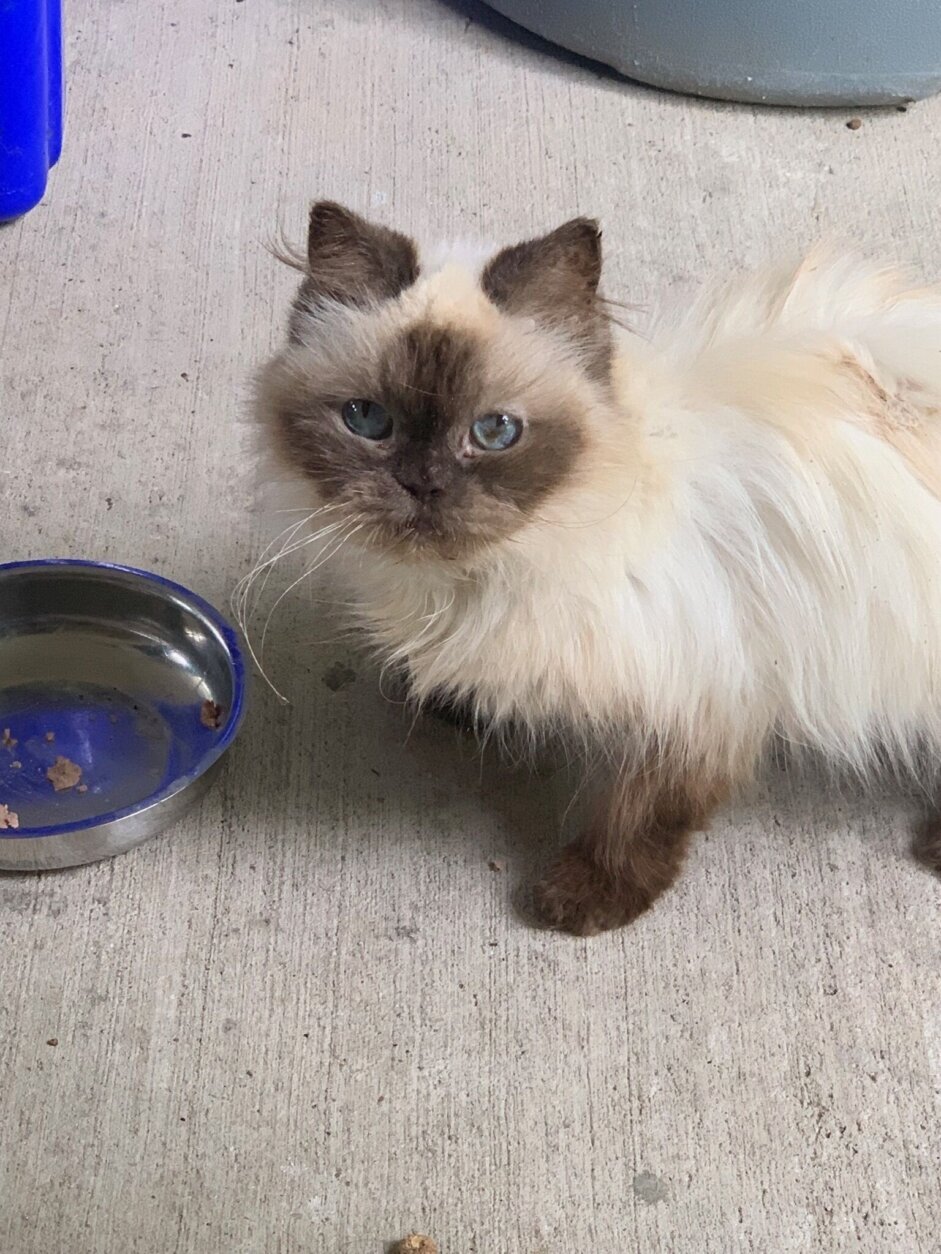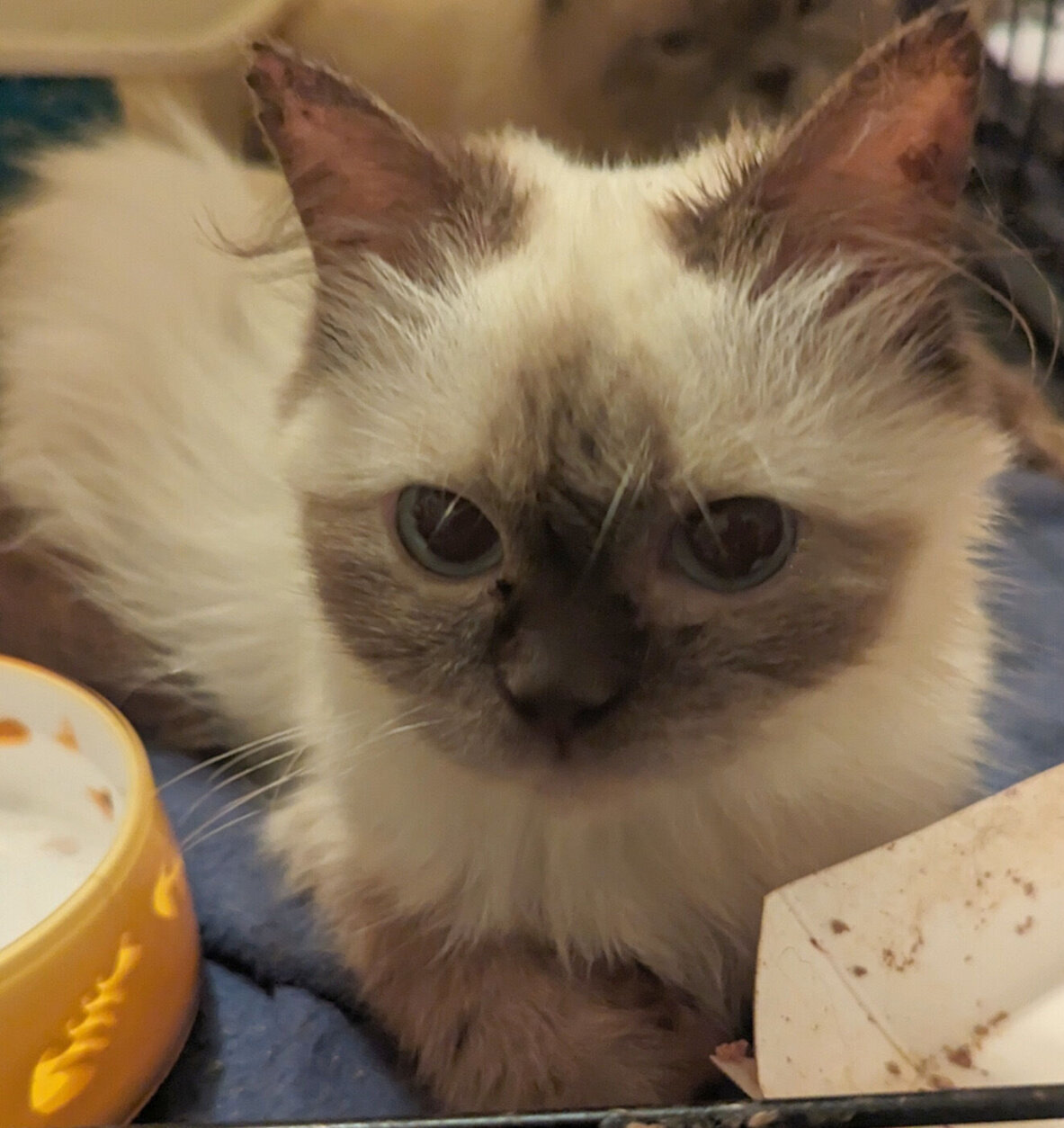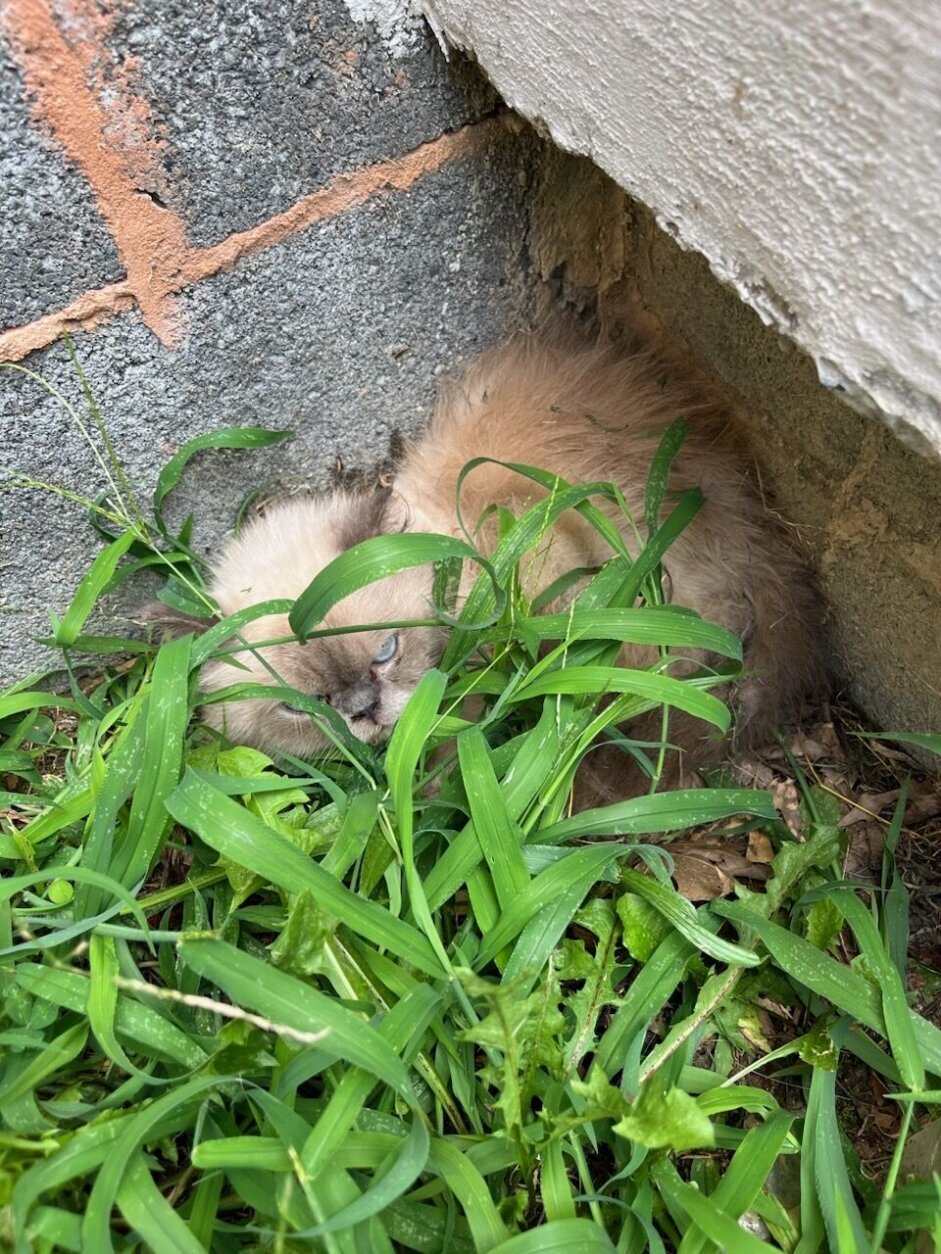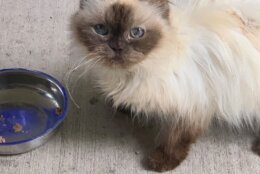





Some very pretty kitties have been popping up, one after the other, in parks and private yards in Montgomery County, Maryland.
About two weeks ago, groups of kittens were found along the Sligo Creek Trail, which runs through Montgomery and Prince George’s counties. Reports about more sightings followed, and the Montgomery County Cat Coalition, which works to cut the county’s feral cat population, got involved.
WTOP’s Kate Ryan captured this rescued Himalayan kitten on video while reporting this story.
This video is no longer available.
Beverly Carragher with the Montgomery County Cat Coalition said this wasn’t your ordinary stray cat sighting situation.
All of the cats that were turning up from the Sligo Creek Trail to the Wheaton Library area were Himalayans — a sought after breed, famous for their blue eyes and dense, fluffy coats.
Carragher said it was odd to find so many purebred cats in one area in such a short span of time.
“It just seemed odd but, you know, things happen,” she said.
Still, Carragher decided to return to the same general area, “and sure enough, I would spot another one.” As she talked to people on the trail, they would often point out even more of the Himalayan cats.
Her group started posting flyers, asking the public to call them when they spotted more of the purebred cats.
“It just sort of snowballed” she said, explaining that, as of Thursday afternoon, as many as 35 cats and kittens — all Himalayans — had been recovered. They range in age from 6 months to 10-years-old.
Carragher is clear on one thing: these cats are not feral. “Of course they were hungry and tired and scared,” she said, but once they were taken in and placed with foster families “they’re perfectly fine” in terms of their behavior. Carragher believes it confirms her belief that they were once house cats.
“Their fluffy coats need care,” said Carragher. “They’re matted a little bit and some of them have fleas, which is understandable, even if they’ve been out for a short time.”
One big concern is the health of the cats. Carragher said none of the cats have been microchipped, and nothing is known about their medical histories. So far, one adult cat has died and Carragher said the cause of that cat’s death isn’t clear. She advises anyone who takes in any cat to make sure to keep it isolated from the rest of their pets until it can be checked by a veterinarian.
Thomas Ingle, the field supervisor with the Montgomery County Office of Animal Services, is also mystified by the appearance of these cats. Because they’re not microchipped and have no collars or tags, “it makes it even harder to track down the person who could be involved in this,” he said.
Ingle said his agency is trying to piece together how this happened — and who might be responsible.
“We have some concerns that they came from somebody, and we don’t know what their intentions may have been,” said Ingle. “Our primary focus right now is just trying to support MC C³,” he added, using an acronym for Carragher’s group.
According to the first vet checks of the cats collected so far, Ingle said, “Some of the cats were dehydrated, some of them were not grooming themselves, which is an indicator of high stress, or they’re not thriving outside.”
Carragher said, given the fact that the Himalayans all seem to have been indoor cats, she considers it a cruelty case. “You’re putting a poor cat out here that doesn’t know anything about surviving in a wild environment.”
Himalayan cat breeders have been contacting her group demanding answers. “Of course, they’re outraged by this,” she said. And Carragher does expect that county officials will investigate.
The group has been flooded with requests to adopt the cats. Carragher said that’s not surprising given the appeal of the breed. But she said most are being fostered now, while eight of them went into care at the Animal Services facility.
Carragher said people who want to help out can volunteer to foster kittens who need socialization. “It just takes a little patience and time” to help kittens found outdoors become socialized for a future indoor home.
Ingle agreed that if people want to help cats and kittens that need homes, they can adopt from their local shelters and support the work of groups like the Montgomery County Cat Coalition.
“They definitely need more volunteers for the amount of work of trapping and neutering and spaying all the cats in Montgomery County that are outside,” said Ingle.
For more information about the Montgomery County Cat Coalition, visit their website.








